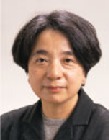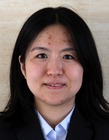 |
 |
 |
 |
Assistant Professor |
Assistant Professor |
Assistant Professor |
Assistant Professor |
 |
|||
Assistant Professor |
The University of Aizu aims to be a front-line university providing the greatest range of the most up-to-date educational and research activities in the field of computer science and engineering internationally. It is a unique institution unparalleled by any other existing Japanese university, which can be seen from its policy of internationally open and competitive faculty positions. In fact, approximately 40 percent of the positions is filled by foreign faculty members. As described in the university regulations, the Office for Planning and Management, headed by the University President, was established as an internal research organization for the purpose of performing general investigative research concerning university functions, along with performing general program planning and design regarding university education and research, international exchange, public relations and publications, legal affairs, local arrangement of conference and other necessary matters concerning administrative management. The Office for Planning and Management continued to work together with other organizations of the University of Aizu in applying for MEXT’s and other programs. Our proposal, “Ten-Chi-Jin Project - Let’s go into the fields of science -” in cooperation with Fukushima Prefectural Board of Education and Aizu Gakuho Junior High School, was selected for JST (Japan Science and Technology Agency) entrusted Project (Theme: Development of Educational Science and Math Program for Society) for 2 years (FY2009 - 2010). |
Refereed Journal Papers
| [okudaira-01:2009] |
M. Setoh, A. M. Nakamura, P. Michel, K. Hiraoka, Y. Yamashita,
S. Hasegawa, N. Onose, and K. Okudaira. High and low-velocity impact experiments
on porous sintered glass bead targets of different compressive strengths:
outcome sensitivity and scaling. Icarus, 205(2):702–711, 2010. |
| Impact experiments on porous targets consisting of sintered glass beads have been
performed at different impact velocities in order to investigate the disruption impact
energy threshold (also called Q*) of these targets, the influence of the target compressive
strength on this threshold and a scaling parameter of the degree of fragmentation
that takes into account material strength. A large fraction of small bodies of our Solar
System are expected to be composed of highly-porous material. Depending on their
location and on the period considered during the Solar System history, these bodies
collide with each other at velocities which cover a wide range of values from a few
m/s to several km/s. Determining the impact response of porous bodies in both highand
low-velocity regimes is thus crucial to understand their collisional evolution over
the entire Solar System history, from the early stages of planetary formation through
collisional accretion at low impact velocities to the current and future stages during
which impact velocities are much higher and lead to their disruption. While these
problems at large scale can only be addressed directly by numerical simulations, small
scale impact experiments are a necessary step which allows the understanding of the
physical process itself and the determination of the small scale behavior of the material
used as target. Moreover, they are crucial to validate numerical codes that can then be
applied to larger scales. Sintered glass beads targets of different shapes and porosity
have been built and their main material properties, in particular their compressive
strength and their porosity, have been measured. The outcomes of their disruptions
both at low and high impact velocities have then been analyzed. We then found that
the value of Q strongly depends on the target compressive strength. Measuring the
particle velocities as a function of their distance to the impact point, we first found
that the attenuation rate of the stress wave in our sintered glass bead targets does not
depend on the impact velocity regime. Ejecta velocities as a function of the distance
from the impact point can thus be well fitted by a power law with an exponent about
2 in both velocity regimes. We then looked for a scaling parameter that can apply to
both regimes. We found that the scaling parameter PI, which is related to the initial
peak pressure and to the stress wave attenuation can be used to represent the outcome
in a general way. Future investigations will be performed to determine whether these
results can be generalized to other kinds of porous materials. |
|
| [okudaira-02:2009] |
Y. Motoyashiki, D. Shindo, K. Okudaira, S. Hasegawa, and E. Sato.
Micrometeoroid Impact Damage on Thin Ceramic Component for Interplanetary
Probe. TRANSACTIONS OF THE JAPAN SOCIETY FOR AERONAUTICAL
AND SPACE SCIENCES, SPACE TECHNOLOGY JAPAN ists26
(ISTS Special Issue: Selected papers from the 26th International Symposium
on Space Technology and Science), 7:Pc 25–Pc 30, 2009,. |
| A new ceramic thruster for an interplanetary probe is currently under development.
Monolithic silicon nitride (Si3N4) , which has good heat resistance and high fracture
toughness among conventional structural ceramics, is a promising material for a high
performance thruster. However ceramics are brittle compared to metallic materials. In
order to evaluate reliability of the ceramic thruster as a space-use component, fracture
behavior against micrometeoroid impacts was investigated. First the risk probability
of the meteoroid impacts which may occur during a mission was estimated based on
impact energy which may cause failure of the material. Second, damage of the silicon
nitride ceramics by a possible micrometeoroid impact was investigated experimentally.
Hypervelocity impact tests were carried out on the silicon nitride ceramic samples with
a two-stage light-gas gun. Impacts at various velocities ranging from 1.0 km/s up to
4.5 km/s brought about three types of failure. However no shattering occurred by
the hypervelocity impact with a possible energy. The experimental results together
with the risk evaluation considering the flight mission conditions show that the Si3N4
ceramic thruster for the interplanetary probe would have no serious problems caused
by a meteoroid impact during the flight mission even with local damage. |
Grants
| [okudaira-03:2009] |
Shigeaki Tsunoyama. JST Development of Educational Science and
Math Program for Society FY2009 - FY2010. |
Academic Activities
| [hashida-01:2009] |
T. Hashida, December 2009. Referee for an article to be published in ’Voluntas’ (refereed journal), International Society for Third-Sector Research (ISTR) |
| [yamauchi-01:2009] |
K. Yamauchi, January-December 2009. Treasurer, EEE Professional Communication Society Japan Chapter |
Ph.D., Master and Graduation Theses
| [hashida-01:2009] |
[yamauchi-02:2009] |
Michiharu Sakamoto (s1140085). Graduation Thesis: Ohonoligical
Processes and Formant Analysis of Aizu Dialects, March 2010. Supervisor is Ian Wilson. E. Kaneko and K. Yamauchi also contributed to his graduation thesis for the right direction. |
